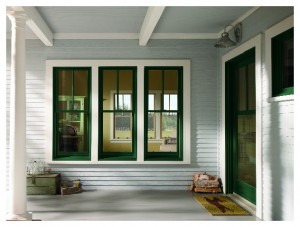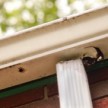Home Preventative Maintenance
Every Homeowner’s Spring Checklist
One of the toughest things about being a homeowner is dealing with repairs.
Things always seem to break at the most inopportune times.
Ideally it would be great if we dealt with our homes more like we do our cars; with regularly scheduled home preventative maintenance. It would be really nice to be able to bring a Home Inspector in each spring to give your house a good once-over. But since most of us don’t want to foot the bill we should probably just learn how to do some basic inspections ourselves.
Home Preventative Maintenance Checklist:
While you obviously won’t have the same training and background as a professional, nobody knows your house better than you do. There are things you know about already along with the history of trouble spots that gives you a slight advantage that an inspector doesn’t have. Plus even without a practiced eye, there are plenty of things you can visually check for problems or issues.
What You Do
Grab a clipboard, a camera, and a pen and let’s get started! You want to mark down any possible trouble spots as well as write detailed notes. The more details the better so you can jog your memory if needed. The camera is for pictures which are easy to then show to a professional if you feel it is something you can’t handle.
Exterior of the Home – You should do a complete walk around your entire house. Note the condition of the roof, gutters, chimney, walls, doors, windows, porches, and decks. Really take a close look and check for rot, insects, nests. Check outdoor lighting, security cameras, as well as trees or bushes that have grown too close to the house. Early spring is a great time for pruning before everything has bloomed fully. Also check the foundation, sidewalks, and driveways for cracks. Don’t forget to look at any fencing you might have as well.
Interior of the Home – You are going to check each room one at a time. Look at outlets, switches, floor, ceiling, walls, and vents. Start in the basement (if you have one) and work up. Look under sinks, check the electrical panels, look at the furnace, and of course check the attic.
Home Preventative Maintenance
Roof
Leaking, sagging, broken shingles or tiles, loose flashing, rot on overhang. finding a roof leak is like finding a needle in a haystack, it helps to know the most common location of roof leaks.
Chimney
Cracked bricks, leaning, missing mortar or bricks. Read: Fireplace safety. Does your roof have a cricket on the upside of the chimney to divert water?
Gutters
Proper slope, clogs, rust or paint issues, leaks or sags. Read 4 gutter warning signs. or Installing snow melting cables in a gutter.
Walls (ext)
Leaning or bowing, rot, flaking or cracking, paint issues. Many windows start rotting at the outer edge of the window sill or nosing. Read how to replace a window sill nosing.
Windows & Doors
Paint, caulking, rotted frames
Porches & Decks
Paint, rot, cracks, wood touching earth (termites) Is your deck or porch safe? Does it need structural repairs or reinforcement?
Basement
Wet insulation, moisture issues, water damage (stains, mildew, odor) Do you need a sump pump or are you considering renovating your basement?
Floors
Water damage, cracked tiles, sagging
Walls & Ceilings
Cracks or sagging. Learn more on how to prepare for painting. ost paint jobs fail because an important step in the preparation phase was skipped or done poorly. Read: 10 steps for a perfect paint job.
Vents
Clean out your dryer vents regularly. Replce your HVAC system with fresh filters.
Bathrooms and Kitchens
Leaks and water damage, tiles, caulking, water pressure, rot. If it’s time to remodel you need to properly prepare: How to prepare for a remodel.
Water heater
Years old, rust or corrosion on pipes, proper drainage, temperature setting. Is it time to replace your water heater? Tips on replacing a water heater. Learn more about on-demand water heaters.
Heating & Cooling
Date last inspected (every year or two for effciency) Do you need to upgrade you furnace?
Electrical
Are outlets grounded, do you need a GFCI outlet, panel shows no damage or shorts, no visible loose wires. Read more for information on electrical upgrades.
Attic
Rodents, infestation, level of insulation, seal air leaks, proper venting and air flow, insulation and water damage. Check and treat for ants.
Now What?
The reason for doing this in the spring is because generally you then have the longest window of time for repairs. Plus a lot of problems begin to occur during the winter so this is the best time to catch them.
Review your checklist and figure out what has to be done, should be done, and is just a minor issue. Then you can determine if it is something you can do yourself or if you should consult a contractor. If you have taken good notes and have pictures then it will be easier to get a simple quote without having them come out to the house.
Your home is your castle. Doing a little home preventative maintenance just makes good sense so you can enjoy your castle more without having to pay someone a lot of money for a big problem erupting that could have been caught when it was a small issue.








